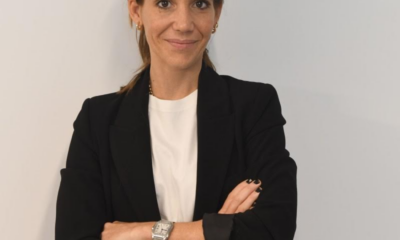Strategy
The Pittsfield Project: Rescuing A Century-Old Icon Through Digital Storytelling
Tom Liravongsa on top of the Pittsfield Building
A 100-year-old Art Deco skyscraper in downtown Chicago—acquired through foreclosure and vacant for years—generated 60 million views and 400,000 followers in under 30 days on TikTok and Instagram. Former hedge fund manager Tom Liravongsa and content strategist Elliott Pepich transformed the 40-story Pittsfield Building restoration from a commercial real estate investment into a viral content strategy case study that’s attracted partnership inquiries from HBO, Netflix, and Amazon, despite having no prior experience in architectural content creation.
“We knew we had something special here, but I don’t think Tom or I expected it to happen overnight,” explains Elliott, founder of Clusive, a strategy-driven content house. “The first video was published, and within the first 10 hours, I woke up the next day, and it was already at like 2.5 million views.”
Tom’s insight was identifying a gap in the creator field. “I could be known as the skyscraper guy,” he told Elliott when they first discussed documenting the restoration. “There could be guys that own 100 skyscrapers, but they’re only going to be thinking about what we’ve created.”
Despite numerous wealthy real estate developers owning historic buildings, none were sharing these spaces on social media. “The other guys in the game, skyscraper owners, they don’t look like me and they don’t act like me, and they will never be on social media,” Tom explains. “I think they cringe at the idea of posting a story.”
Tom and Elliott’s collaboration stood out from standard real estate documentation in how they combined the former’s subject matter expertise with the latter’s content creation skills. “You can see the clear line separation,” Tom admits, describing the difference between his early, unstructured posts and the strategic content after Elliott joined. “That’s the value of bringing someone who knows what they’re doing.”
Elliott’s approach balanced technique with genuine expression. “There is a formula for social media nowadays,” he acknowledges, “but our strategy is just to have fun at the end of the day.”
Their first video’s hook—the straightforward claim “I bought a skyscraper”—exemplifies this approach. “That sounds so clickbait to the average person that you have more questions than answers and you have to keep watching,” Elliott explains. “It’s clickbait, but it’s true at the end of the day.”
The Architectural Treasure Behind the Content
The Pittsfield Building isn’t just any skyscraper—it’s a meticulously crafted architectural jewel built in 1927 by the Marshall Fields estate, the department store magnates whose flagship store stands adjacent to the tower.
“The building was built in under 11 months, believe it or not, which is crazy,” Elliott notes about its swift construction. Now designated as both a federal and state historic landmark, the building features elaborate Art Deco details, including a copper roof that Elliott once illegally climbed to photograph before he ever met Tom.
Tom acquired the building through an unusual foreclosure process after it had sat in limbo for a decade. “The building has been quite like over a decade in this array,” Tom explains. “We bought it through a foreclosure. The guy we bought it from was running some kind of money scheme out of another country. And he never even saw the building, as far as I know.” The legal complications were so severe that Tom didn’t receive the keys for even two months after I bought it.
The building’s features have become central to their content strategy. The Pittsfield contains an original Prohibition-era speakeasy in the basement, ornate elevators, forgotten safes, and hidden rooms that continually surprise even the owners.
“We’re going and doing cool, fun, active adventures every day,” Elliott shares about their exploration process.
The Production Approach
Elliott and Tom’s content creation process is straightforward. Rather than elaborate production schedules or scripts, they approach filming with genuine curiosity.
“Tom and I just find time to show up at the building, and we put hard hats on, and we grab lights, and we just go in all the fascinating rooms,” Elliott explains. “Every time I show up at the building, I seem to find new hidden rooms in areas that he didn’t know about and I didn’t know about. And it’s like, ‘Oh, we can make a concept out of this and share this with the world.'”
This exploration-driven approach yields content that feels real rather than contrived. For their launch strategy, Elliott explains, “I had written the scripts and the concepts, and I was like, the way I filmed it was like, ‘All right, we have one concept here. We’ll post a video, and if that doesn’t work, we can go back and re-edit that concept 30 different ways and try again if we need to.’”
Their content strategy is tailored to each platform’s unique characteristics. On TikTok, their content maintains a less polished, more genuine feel, while their planned YouTube content will be more structured and informative.
“TikTok is different,” Elliott observes based on his experience across platforms, including work with the Chicago Bulls, NBA, and major music festivals. “I feel like it’s a little less produced, more just fun, organic moments versus the higher production.”
Some posts have generated notable engagement, with Tom noting, “I think there are some posts that’ve had 50,000 interactions, just on what to do with safes and similar topics.”
From Social Media to Multi-Platform Media Strategy
What began as exploratory social media content has quickly expanded into a multi-platform media strategy with three distinct phases.
“Phase one was to launch the brand, Tom, ‘The Skyscraper Guy,’ on social media through short-form content and tell the story,” Elliott explains. “Phase two was YouTube long form. If there’s enough interest in the short form, we’re gonna go to YouTube long form.”
The strong response to their short-form content sped up their timeline. “Within 10 hours, we’re already at two and a half million views,” Elliott recounts. “I’ve worked on many projects, and it’s like I’ve never received emails and so many DMs from people saying, ‘Where’s the YouTube channel? Where’s the YouTube channel?'”
This demand has prompted them to move into the third phase of their strategy: forming partnerships with traditional television and streaming services. “We’ve had preferred vendors for HGTV, HBO, Netflix, and Amazon, and all of these groups have reached out wanting to do TV series concepts,” Elliott reveals.
The Community-Driven Restoration
One of the most practical aspects of the Pittsfield Project is how audience engagement directly influences the restoration process. The response—over 5,000 Instagram messages and 2,500 email submissions from around the world—has changed their restoration priorities and approach.
“We have such a high demand for people who want to do tours,” Elliott explains. “Now we have to stop everything that we’re doing and figure out what’s the best way to package this up and take people in the building safely and show them the craftsmanship before we even finish it.”
Tom and Elliott view this public interest as validation of their vision for the building. “We want to preserve it and restore it and make it accessible to people to live in and people, the public, and people to enjoy for the next hundred years,” Elliott shares.

Elliott Pepich on the roof of the Pittsfield Building
The Reality Behind ‘Overnight’ Success
While their viral success appears immediate—growing from zero to nearly half a million followers in 45 days—both Tom and Elliott emphasize that years of preparation preceded their breakout moment.
“It really looks like this happened in 45 days. But I could argue that it took 10 years to get here,” Elliott reflects. “It was 10 years leading up to this moment for these 45 days.”
Elliott’s decade of photography experience, including his clandestine documentation of the Pittsfield Building long before he met Tom, laid the groundwork for their content strategy.
Similarly, Tom’s journey from factory worker to financial professional to real estate developer provided the expertise and resources necessary to undertake such a project. His professional path included roles such as managing a hedge fund that reached $1.2 billion in assets under management and appearing on the front cover of Money & Investing in the Wall Street Journal.
For those feeling discouraged by slow growth, the Pittsfield Project offers an important reality check about the invisible preparation behind visible success. “You just gotta show, you gotta take the time and you gotta show up and you gotta do it,” Elliott advises. “There really is no instant gratification.”
Creating Content in Unexplored Niches
For creators exploring less common content categories, the Pittsfield Project demonstrates several effective approaches. First, identify genuine opportunities in overlooked subjects. As Tom recognized, historic architecture restoration was a field where established players “cringe at the idea of posting a story,” creating space for new voices.
Second, consider unexpected team-ups that combine different areas of expertise. Tom’s real estate knowledge and Elliott’s content creation skills combined to create a whole greater than the sum of its parts. “Trust the process,” Tom advises, noting that content creators should defer to experts in specialized fields even when the approach seems counterintuitive.
Third, embrace authenticity over perfection. “My biggest thing is there’s such a strong legacy,” Elliott reflects about the building.
Fourth, consider how audience participation can enhance both content and business decisions. The Pittsfield Project’s responsiveness to viewer interest has created a productive cycle of engagement and development. “It’s driving decisions,” Elliott explains about the audience feedback they receive.
Fifth, understand that different platforms require different approaches. Tom and Elliott note that content must be tailored to each environment’s unique characteristics, from TikTok’s preference for genuine moments to YouTube’s demand for more structured, informative content.
What’s Next for Architectural Storytelling?
Tom and Elliott envision the Pittsfield Building as just the beginning of a larger movement. “Pittsfield is the anchor point,” Elliott explains. “From there, there are other skyscrapers, not only in the United States, but around the world.”
Together, they’ve potentially created a blueprint for a new category of content that connects the digital present with the architectural past. When asked what the building might say if it could speak, Tom imagines it would say, “Treat me right. Bring me back to what I was.”
“People are always going to want a sense of community and belonging, and people are always going to need somewhere to live,” Elliott reflects. “So, why not combine it all into one big melting pot and give back to the people to enjoy it?”




















